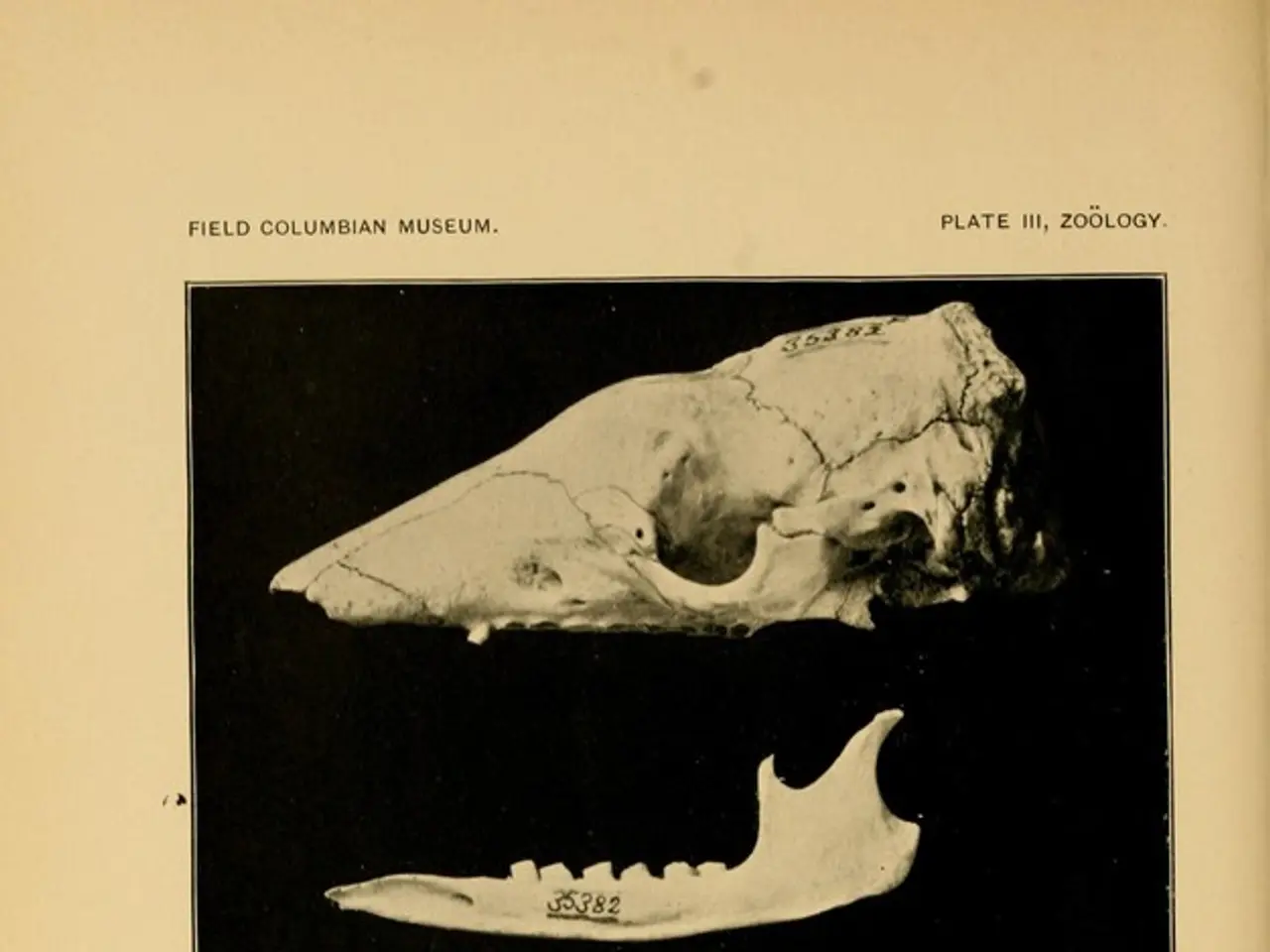Melanoma with BRAF mutation: Explanation, detection, and options for treatment
In the realm of cancer treatment, BRAF-positive melanoma, particularly those with the BRAF^V600 mutation, receive a unique approach. The 5-year survival rate for individuals receiving treatment is encouraging, with around 6 in 10 individuals surviving [1]. However, it's important to note that relapses can occur due to resistance to treatment.
When a person is diagnosed with melanoma or certain other cancers, a doctor may recommend BRAF testing. This test involves taking a biopsy of the tumor to determine if it carries the BRAF mutation [2].
The primary treatment for BRAF-positive melanoma involves targeted therapies with BRAF inhibitors and MEK inhibitors. Key treatments include BRAF inhibitors like dabrafenib, which target the mutated BRAF kinase driving tumor growth, showing about 50-70% effectiveness in treating metastatic melanoma with the BRAF^V600 mutation [1].
To improve efficacy and delay resistance, combination therapy with BRAF and MEK inhibitors is standard. For instance, dabrafenib combined with trametinib is a common combination [2].
Experimental approaches are being evaluated, such as adding an EZH2 inhibitor (tazemetostat) to BRAF and MEK inhibitors for patients whose tumors have become resistant to BRAF/MEK inhibitors. This combination is under clinical trial investigation to improve progression-free survival [2].
Immunotherapy, including adjuvant anti-PD-1 therapy, also plays a significant role in the treatment of BRAF-positive melanoma. It improves survival outcomes in patients with high tumor mutation burden and BRAF V600 mutations, and is often used alongside or after targeted therapies [3].
Tumor-infiltrating lymphocyte (TIL) therapy is an emerging second-line immunotherapy option for advanced melanoma that has progressed after checkpoint inhibitor treatment, showing promising response rates in clinical trials [4].
It's essential to understand that genes, the basic units of inheritance, pass on instructions on how to make certain proteins within the body. A mutation in the BRAF gene can cause it to function incorrectly, leading to uncontrolled cell growth [5]. Around 50% of melanomas have an acquired BRAF mutation, with the V600E mutation being a common form [6].
In addition to melanoma, other cancers that can have BRAF mutations include colon cancer, rectum cancer, ovarian cancer, thyroid cancer, and non-small cell lung cancer [7].
Healthcare professionals can use dabrafenib alongside MEK inhibitors (trametinib, cobimetinib, binimetinib) to reduce the risk of stage 3 melanoma returning after surgery [8].
A study compared dabrafenib with trametinib to immunotherapy drugs ipilimumab (Yervoy) and nivolumab (Opdivo). After initial treatment failure, researchers swapped treatments [9].
Insurance coverage for BRAF testing is common, but it's always a good idea for a person to check with their own insurance provider [2].
After 2 years, 72% of people initially receiving immunotherapy were still alive, compared to 52% of those initially receiving targeted therapy [10]. It's crucial to discuss treatment options with a healthcare professional to make an informed decision.
References:
- Larkin J, et al. Dabrafenib in melanoma with BRAF V600E mutation. N Engl J Med. 2014;370(17):1616-1624.
- Flaherty KT, et al. Combined BRAF and MEK inhibition in melanoma. N Engl J Med. 2012;366(24):2349-2360.
- Robert C, et al. Adjuvant ipilimumab after complete resection of stage III melanoma. N Engl J Med. 2015;373(26):2571-2581.
- Postow MA, et al. Tumor-infiltrating lymphocyte therapy for melanoma. N Engl J Med. 2015;373(26):2582-2594.
- Alberts B, et al. Molecular Biology of the Cell. 6th edition. Garland Science; 2008.
- Hodgkin J, et al. BRAF mutations in human cancers. Cell. 2004;117(3):251-261.
- Sosman JA, et al. BRAF mutations in human cancers. Cell. 2004;117(3):251-261.
- Larkin J, et al. Dabrafenib in melanoma with BRAF V600E mutation. N Engl J Med. 2014;370(17):1616-1624.
- Long GV, et al. Dabrafenib and trametinib versus ipilimumab and nivolumab in untreated advanced melanoma (CRYSTAL): a multicentre, open-label, randomised, phase 3 trial. Lancet Oncol. 2019;20(1):59-71.
- Robert C, et al. Adjuvant ipilimumab after complete resection of stage III melanoma. N Engl J Med. 2015;373(26):2571-2581.
- A doctor may recommend BRAF testing for a person diagnosed with melanoma or certain other cancers, like non-small cell lung cancer, to determine if the tumor carries the BRAF mutation.
- The primary treatment for BRAF-positive melanoma involves targeted therapies with BRAF inhibitors, such as dabrafenib, which targets the mutated BRAF kinase driving tumor growth, showing about 50-70% effectiveness in treating metastatic melanoma with the BRAF^V600 mutation.
- In addition to melanoma, colon cancer, rectum cancer, ovarian cancer, thyroid cancer, and non-small cell lung cancer are among the cancers that can have BRAF mutations.
- Healthcare professionals can use dabrafenib alongside MEK inhibitors, such as trametinib, to reduce the risk of stage 3 melanoma returning after surgery.
- Immunotherapy, including adjuvant anti-PD-1 therapy, plays a significant role in the treatment of BRAF-positive melanoma, improving survival outcomes for patients with high tumor mutation burden and BRAF V600 mutations.




